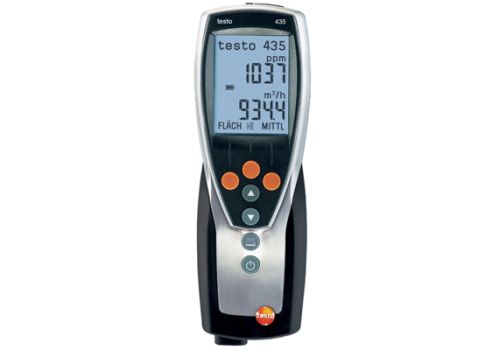Energy might cost you.
We mean, in today’s world energy is commercial, so it is very necessary to conserve and use it efficiently or else it might cost you (in a very bad way).
Thus, there arises the need for an energy audit regularly at you facility.
These energy audit measurements require the use of instruments. These instruments must be portable, durable, easy to operate and highly accurate. Which brings you to us, we cater all your needs be it a thermal imager, flue gas analyzer, multifunction instruments, portable flow meter or BTU meters.
We will help to assure you that all your energy audits run smoothly.
Thermal imagers from Testo are characterised by innovative technologies and practical features as well as by their excellent thermal image quality. So, thermal processes can for instance be analysed over hours, inspection routes acn be efficiently managed with high-resolution thermal images or thermographs can be easily evaluated on PCs.

Our multi-function measuring instruments offer you a high-level of flexibility, since different probes can be connected depending on the measuring task. You can analyse and document the measurement data using the PC software.

Model : Handheld / Portable / Clamp On/ Insertion
DMTF transit time flow meter utilizes two transducers that function as both ultrasonic transmitters and receivers. The transducers are clamped on the outside of a closed pipe at a specific distance from each other. The transducers can be mounted in V-method in which case the ultra sound transverses the pipe twice, or W-method in which case the ultra sound transverses the pipe four times, or in Z-method in which case the transducers are mounted on opposite sides of the pipe and the ultra sound transverses the pipe only once. The selection of mounting method depends on pipe and liquid characteristics. When flow meter works, two transducers transmit and receive the ultrasonic signal which travels firstly downstream and then travels upstream (Figure 1). Because ultra sound travels faster downstream than upstream, there will be a difference of time of flight(△t). When the flow is still, the time difference(△t) is zero. Therefore, as long as we know the time of flight both downstream and upstream, we can work out the time difference, and then the flow velocity (V) and flow volume (Q) via the following formula.
Features:
- Various installation methods : Clamp-on transducers and Insertion transducers are available and can be hot-tapped.
- Transit-time series are carefully designed and the operation is user-friendly, simple and easy.
- The design makes the mounting process very simple, and no special skills or tools are required.
- High precision and reliability, independent of fluid conductivity, wider applications than magnetic flow meters.
- Wide measuring range, can measure low flow rate up to 0.003m/s
- Bi-directional flow measurement.
- No moving parts, no pressure drop, no need of maintenance.
- Four lines display for total flow, flow rate, velocity and meter running status.
- The high-temperature transducer is suitable to liquid of -40℃ ~ 250℃.
- Provide SD memory function.
- Explosion-proof products awarded: ATEX certified. The explosion- proof instrument can be operated directly on panel keypad.
- Wireless real-time GPRS module available.

